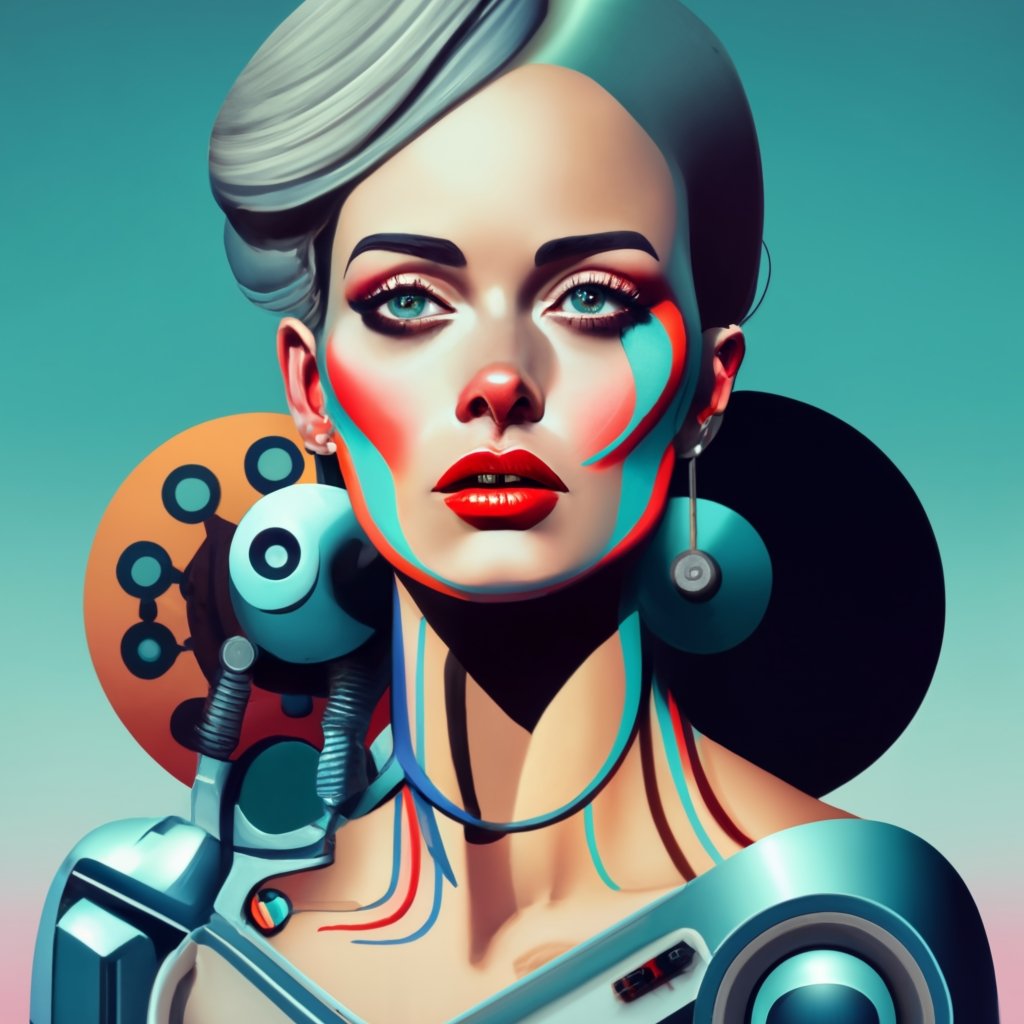
Introduction
In the picturesque town of Stepford, where the grass is always greener and the housewives are always perfect, a chilling narrative unfolds. "The Stepford Wives," both the novel by Ira Levin and the subsequent film adaptations, offer more than just a tale of suburban intrigue. They serve as an uncanny forecast of a future intertwined with artificial intelligence (AI) and robotic automation. In this article, we delve into the eerie accuracy of the Stepford Wives AI prediction and its relevance in today's world.
The Stepford Wives: A Glimpse into AI's Impact on Society
As we dissect the portrayal of AI in 'The Stepford Wives,' it becomes clear that the Stepford Wives AI prediction extends beyond mere fiction. The transformation of the once-independent women of Stepford into docile, obedient housewives, each with a robotic undertone, raises intriguing questions about the role of technology in our lives. It's a stark reminder of how science fiction can often foreshadow reality.
In the 1970s, when Ira Levin penned his novel, the idea of AI and automation was still in its infancy. Yet, the Stepford story's central theme – the gradual replacement of humans with machines – now seems more prescient than ever. Today, we stand at the cusp of an AI revolution that promises unparalleled convenience but also raises ethical and societal concerns.
Predictions of AI-Driven Automation in 'The Stepford Wives'
The Stepford narrative serves as a cautionary tale, illustrating the potential consequences of unchecked AI predictions becoming a reality. In a world where household chores are automated, and the perfect spouse can be manufactured, we see a reflection of our society's increasing reliance on AI and automation to simplify our lives.
The Stepford men in the story are portrayed as the architects of this transformation, using AI and technology to mold their ideal wives. The comparison to contemporary discussions about gender roles and technology's impact on relationships is striking. It prompts us to reflect on how AI and automation are reshaping not only our homes but also our identities.
The Role of Technology in Shaping Gender Norms
'The Stepford Wives' doesn't just predict AI; it also delves into the intricate relationship between technology and gender norms. The docile, perfect wives of Stepford raise questions about societal expectations and the potential consequences of using technology to enforce traditional roles.
As we look at AI advancements today, it's crucial to consider how technology can either challenge or reinforce existing gender stereotypes. Recognizing these implications is a vital step toward creating a more equitable future.
AI Predictions in Contemporary Society
While 'The Stepford Wives' may not have foreseen the exact technological advancements we have today, its eerie predictions have undeniable parallels in our current world. From AI-powered virtual assistants to automated manufacturing, we've witnessed the integration of AI into various aspects of our lives.
Furthermore, discussions about AI ethics, privacy, and the potential for AI to exacerbate inequality are all too relevant. As we confront these challenges, we can't help but draw connections to the cautionary tale of Stepford.
The Evolution of AI Since 'The Stepford Wives'
To truly appreciate the accuracy of 'The Stepford Wives' AI predictions, we must explore how AI has evolved since the 1970s when the novel was written. In doing so, we gain a deeper understanding of the uncanny parallels between fiction and reality.
Back in the 1970s, AI was in its infancy. Computers were large, clunky machines with limited capabilities compared to today's sleek and powerful devices. The concept of machine learning and deep learning, which are fundamental to modern AI, was still in its theoretical stages.
However, even in those early days, AI captured the imagination of writers like Ira Levin. 'The Stepford Wives' presented a vision of AI that was both alluring and terrifying. The idea of machines capable of mimicking human behavior, emotions, and even appearance was a central theme.
Fast forward to the present day, and AI has made remarkable strides. Machine learning algorithms can process vast amounts of data, recognize patterns, and make decisions with incredible accuracy. Natural language processing (NLP) allows AI to understand and generate human language, making virtual assistants like Siri and Alexa possible.
Furthermore, the development of robotics has brought us closer to the Stepford scenario. While we may not have lifelike robots replacing spouses, we do have advanced robotic systems that perform tasks once reserved for humans. Robots can vacuum our homes, assist with surgery, and even explore distant planets. These advancements have brought us closer to the world Ira Levin imagined.
Perhaps one of the most significant advancements in AI since 'The Stepford Wives' is the integration of AI into everyday life. We carry AI-powered devices in our pockets, use them to navigate, shop, and communicate. AI algorithms influence our social media feeds and recommend content tailored to our preferences. It's a level of integration that, in some ways, mirrors the ubiquitous presence of technology in Stepford.
Ethical Considerations in AI Development
One of the central themes of 'The Stepford Wives' is the lack of ethical considerations in the development of AI-like technology. In the story, the men of Stepford create their ideal wives without regard for the consequences. This raises important questions about the ethical development of AI in our world.
Today, ethical considerations are at the forefront of AI development. We recognize the need for transparency, accountability, and fairness. The use of AI in decision-making, such as in hiring and lending, is scrutinized for bias and discrimination. Discussions about privacy, data security, and the potential misuse of AI are ongoing.
Reg ulatory bodies and organizations are working to establish guidelines and standards for responsible AI development. The goal is to ensure that AI benefits all of society without harming individuals or perpetuating inequalities.
As we draw parallels between 'The Stepford Wives' and our AI-driven world, it becomes clear that the lessons from fiction can inform our approach to technology. We must prioritize ethical considerations and ensure that AI is developed with the best interests of humanity in mind.
AI and the Shifting Landscape of Work
Another aspect of 'The Stepford Wives' that resonates with our modern world is the transformation of work. In Stepford, the women are replaced by robotic counterparts who excel at household tasks. This raises questions about the impact of AI and automation on employment.
Today, the discussion around AI and employment centers on the automation of routine and repetitive tasks. AI-driven machines and robots are increasingly used in manufacturing, logistics, and even customer service. While AI can improve efficiency and productivity, it also raises concerns about job displacement.
However, the story of Stepford reminds us that the impact of AI on work extends beyond job displacement. It highlights the potential for AI to redefine the nature of work itself. In Stepford, the women are replaced not just by machines but by machines that perfectly mimic their roles. This challenges our traditional notions of work and identity.
As AI continues to evolve, we may see the emergence of new types of work that involve the collaboration between humans and AI systems. Jobs that require emotional intelligence, creativity, and complex problem-solving may become more valued as routine tasks are automated.
Preparing for this shifting landscape of work involves education and training to equip individuals with the skills needed to thrive in an AI-augmented world. It also involves policies and social support systems to ensure that the benefits of AI are distributed equitably.
The Stepford Wives and Gender Roles in the 21st Century
The Stepford Wives' challenges traditional gender roles in a provocative way. The men in Stepford use technology to mold women into their idealized versions of femininity, effectively erasing their individuality. This raises important questions about gender equality and the role of technology in perpetuating or challenging gender stereotypes.
In our contemporary society, discussions about gender equality and the impact of technology on gender roles are ongoing. We've seen how technology can both reinforce and challenge stereotypes. Social media, for example, can perpetuate harmful beauty standards, but it can also be a platform for activism and empowerment.
AI, too, has a role to play in this conversation. The development of AI systems that are free from bias and discrimination is crucial. Bias in AI algorithms can perpetuate existing inequalities, particularly in areas like hiring and lending where AI decisions can have profound real-world consequences.
Efforts are being made to ensure that AI is developed with diversity and inclusion in mind. This involves diverse teams working on AI projects, data that accurately represents different demographic groups, and continuous testing and evaluation to identify and mitigate biases.
'The Stepford Wives' reminds us of the dangers of using technology to enforce rigid gender norms. It serves as a cautionary tale, urging us to consider the ethical implications of AI on gender equality and individual autonomy.
Conclusion
As we conclude our exploration of 'The Stepford Wives' and its eerie AI predictions, it's evident that this iconic story holds a mirror to our rapidly evolving technological landscape. The cautionary tale of unchecked AI and automation serves as a thought-provoking reminder of the need for responsible development and ethical consideration in our pursuit of technological advancement.
